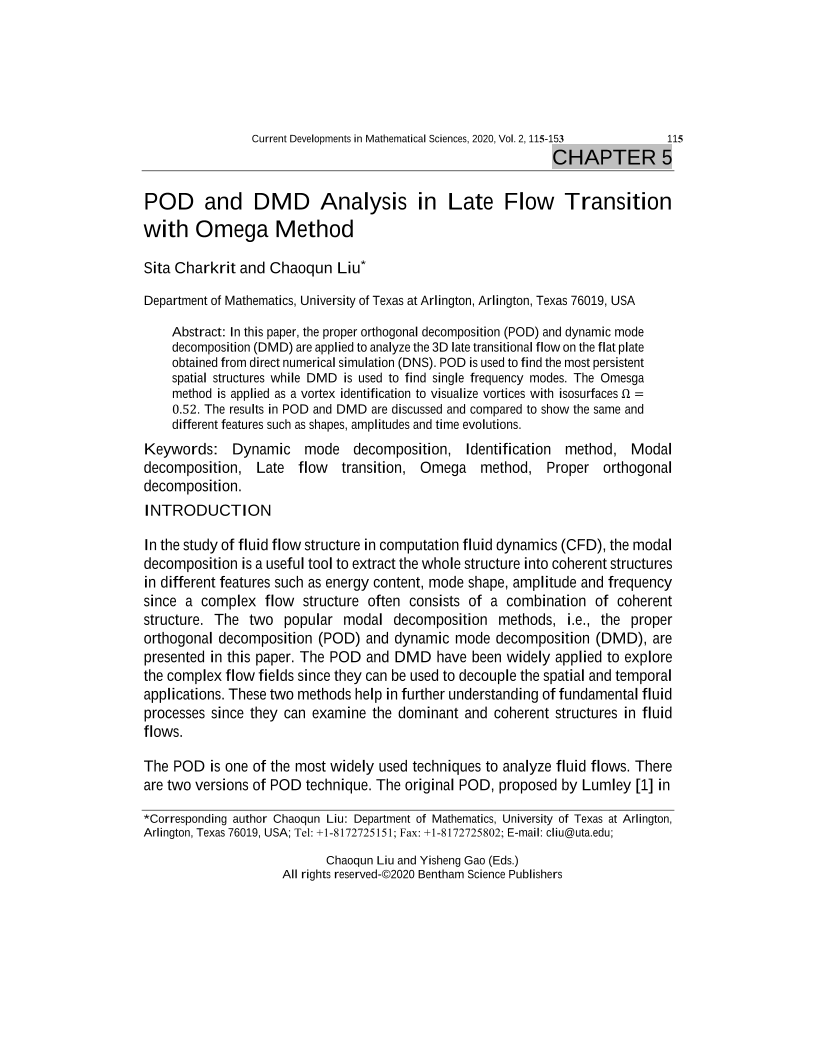POD and DMD Analysis in Late Flow Transition with Omega Method

- Authors: Sita Charkrit, Chaoqun Liu2
-
View Affiliations Hide Affiliations2 Department of Mathematics, University of Texas at Arlington, Arlington, Texas 76019, United States
- Source: Liutex-based and Other Mathematical, Computational and Experimental Methods for Turbulence Structure , pp 115-153
- Publication Date: April 2020
- Language: English
Preview this chapter:



POD and DMD Analysis in Late Flow Transition with Omega Method, Page 1 of 1
< Previous page | Next page > /docserver/preview/fulltext/9789811437601/chapter-5-1.gif
In this paper, the proper orthogonal decomposition (POD) and dynamic mode decomposition (DMD) are applied to analyze the 3D late transitional flow on the flat plate obtained from direct numerical simulation (DNS). POD is used to find the most persistent spatial structures while DMD is used to find single frequency modes. The Omesga method is applied as a vortex identification to visualize vortices with isosurfaces Ω = 0.52. The results in POD and DMD are discussed and compared to show the same and different features such as shapes, amplitudes and time evolutions.
Hardbound ISBN:
9789811437588
Ebook ISBN:
9789811437601
-
From This Site
/content/books/9789811437601.chapter-5dcterms_subject,pub_keyword-contentType:Journal -contentType:Figure -contentType:Table -contentType:SupplementaryData105
/content/books/9789811437601.chapter-5
dcterms_subject,pub_keyword
-contentType:Journal -contentType:Figure -contentType:Table -contentType:SupplementaryData
10
5
Chapter
content/books/9789811437601
Book
false
en

